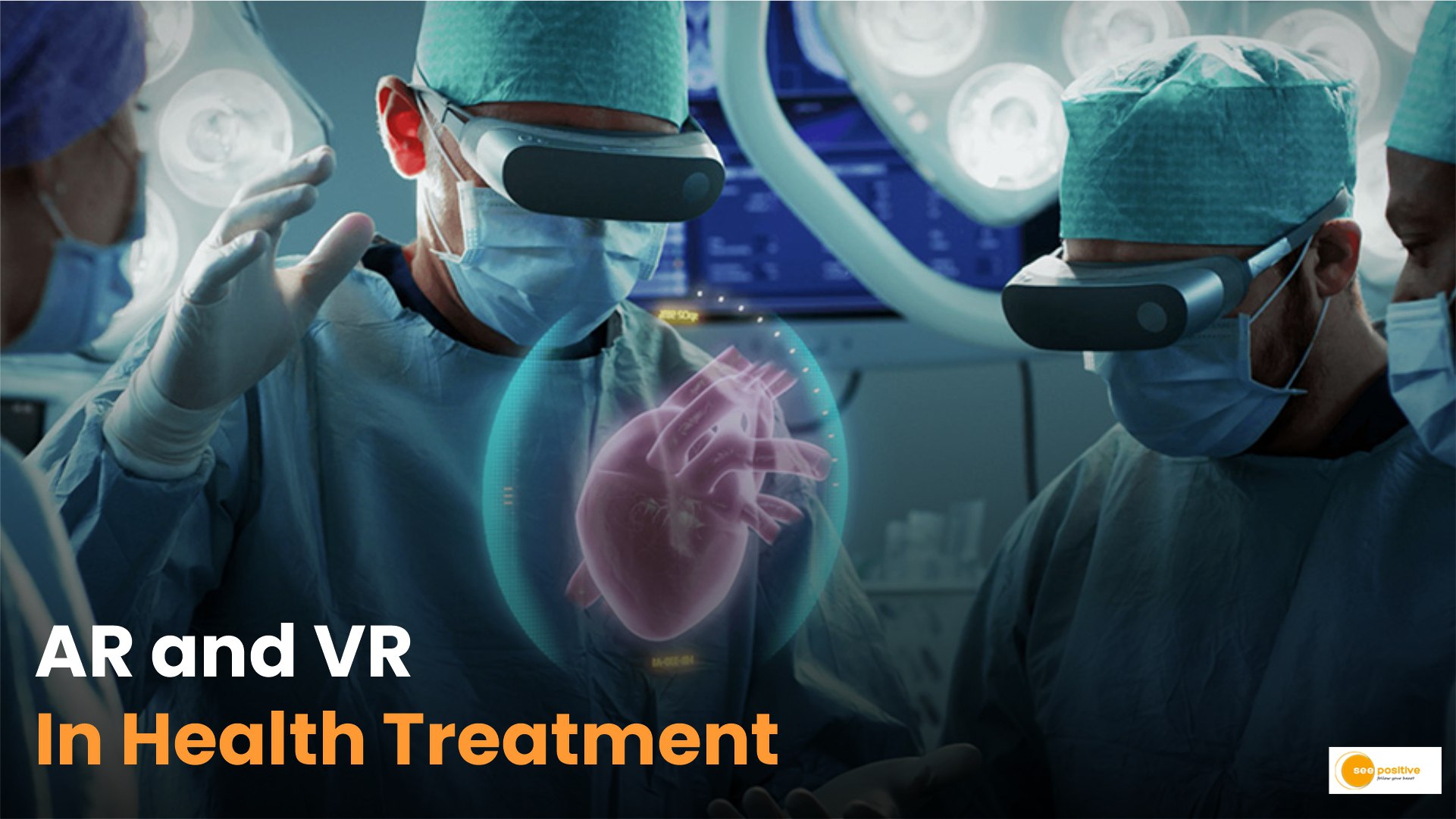AR and VR: In recent years, technology has changed how we live. One area where it’s making a big difference is in mental health treatment. Augmented Reality (AR) and Virtual Reality (VR) are now helping people manage and improve their mental well-being. These tools make it possible to treat mental health issues in new ways that are both safe and effective.
What Are AR and VR?
Augmented Reality (AR) adds digital elements to the real world. For example, with AR, you can use a Smartphone or tablet to see computer-generated images layered on top of the world around you. It might be used to show a relaxing scene, helping people feel calm or safe.
Virtual Reality (VR) is different. It creates a fully virtual world that you can step into using special headsets. This can transport users into a peaceful beach or even into a crowded city. In this new world, they can face fears, learn to relax, or practice social situations.
How AR and VR Help Mental Health
Reducing Anxiety and Stress
VR can guide users through relaxing scenes, like beaches or forests. For people who feel anxious or stressed, VR offers a calm environment. It can help them take a break from their daily stress. In VR, people can also practice breathing exercises or meditation to feel more relaxed.
Facing Phobias
Many people have fears, like the fear of flying or heights. VR can help them face these fears in a safe way. For example, someone who is afraid of flying can “experience” being on an airplane without actually being on one. This is called exposure therapy. VR allows people to slowly get used to their fears, which helps them feel less scared over time.
Treating PTSD (Post-Traumatic Stress Disorder)
PTSD affects people who have gone through difficult or traumatic events. VR can help people with PTSD by gently exposing them to situations related to their trauma. Therapists use VR to create similar but controlled environments, helping the person face their trauma in small steps. This process can reduce their fear and help them feel more comfortable over time.
Improving Social Skills
For people with social anxiety or difficulty in social situations, VR can be a useful tool. In VR, they can practice conversations, job interviews, or public speaking without any pressure. By practicing in a safe, virtual world, people can build their confidence and learn how to interact with others.
Pain Management
Chronic pain is difficult to manage, and it often affects mental health. VR can offer a distraction by creating virtual environments that take the mind off pain. This technique, called “VR distraction,” is used in some hospitals to help patients feel better without relying on medication.
Challenges and Limitations
While AR and VR offer many benefits, there are also some challenges:
– Cost: VR headsets and software can be expensive.
– Access to Equipment: Not everyone has access to AR and VR technology.
– Side Effects: Some people may feel dizzy or uncomfortable in a virtual environment. Therapists need to be aware of these risks.
Positive Takeaway
AR and VR are changing mental health treatment. They provide a safe, immersive way for people to face fears, manage stress, and practice social skills. Although there are still challenges, the potential of AR and VR is huge. In the coming years, AR and VR could become essential tools for mental health care, offering hope and healing too many.


